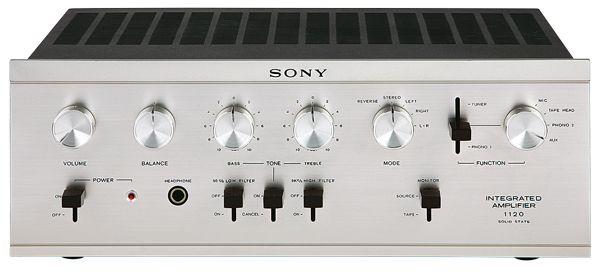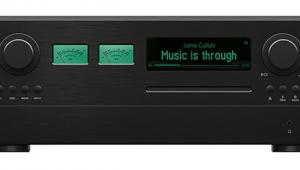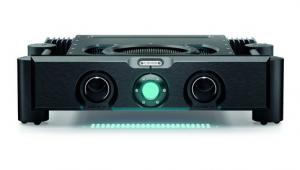Sony TA 1120a (Vintage)

The TA-1120 stereo amplifier was a step-ahead design which combined power, quality, reliability and compactness in a way that had not been seen before, but which in a few years would become ubiquitous across the ranges of Japan’s major hi-fi brands.
In 1968 the original TA-1120 was replaced by the TA-1120A, as tested here, the addition of a headphone socket and the removal of a ‘safety’ indicator light being the only obvious external clues as to which model is which. Revisions were also made to the preamplifier circuit.
The main selector lever gives a choice of phono 1 (MM) or tuner, along with a central position that selects a rotary control giving four further options, eg, mic, tape head, second MM turntable and line-level auxiliary input, which can be used to connect a CD player.
All the low-level sources were handled by a single versatile preamp stage. The characteristics of this stage were altered automatically by the selection of different negative feedback profiles: RIAA for phono 1 and phono 2, NAB for the tape head and flat for the microphone. Tape head EQ could be adjusted too.
Bypassable tone controls were also evidence of the sophistication of the design, with bass and treble both set by rotaries. Additional switched filters at 50Hz (rumble) and 9kHz (scratch) were also fitted. The TA-1120A sports a standard ¼in headphone socket driven directly from the output of the preamplifier.
To obtain a claimed 50W into 8ohm Sony used an unusually high supply voltage of 93V to feed the TA-1120A’s output stage, which meant the power supply needed a bulky reservoir capacitor. Since transistors are intolerant of heat and overload, a circuit was fitted that monitored the temperature of one 2SD45 in each channel and shut down the power amplifier if things got too hot. Thermal inertia meant that this arrangement could never be fully effective but AC capacitor coupling to the speakers offered some protection.
A quiet amp
A Cyrus CD8 SE 2 CD player was the source for the listening test. The speaker outputs comprise heavily chromed nuts into which (slightly undersized) banana plugs can be inserted. So modern cables can be connected. Turn the volume control and nothing much happens until you get half way up the scale, at which point it does begin to operate normally.
The way the Sony rendered vocals, both male and female, struck us as being pleasingly clean and free of muddle. What’s more, the amp was impressively quiet for a ’60s design. Normally one would expect to hear a trace of hum and hiss between tracks or when the music is quiet, but this was not so.
With the title track of Don Henley’s The End Of The Innocence [Geffen] the piano line which underpins the track was elevated beyond its usual prominence and came to rather dominate the rest of the proceedings. It also tended to smear the tempo of
the music.
Meanwhile, the extreme treble present in the percussion on the Henley track was characteristic of another shortfall in the amp’s presentation: the top end could sound slightly dirty and diffuse, lacking the crystal-clear sparkle that one has come to expect from recordings on CD. The TA-1120A is not quite as fluid as some of its elite European competition.
With more complex mixes, like the heavily processed works of Enya with reverb and other studio effects used liberally to give the recordings their distinctive ethereal feel, the Sony came up trumps. It made a fair fist of ‘On My Way Home’ from the The Memory Of Trees album [WEA], delivering a reasonably coherent soundstage that remained solidly located between and around the loudspeakers. On this particular occasion the lower midband warmth that had been observed previously was not such an impediment to musical enjoyment.
Verdict
Build quality, power and strong audio performance make the Sony TA-1120A a vintage gem. Although, being slightly quirky in both sound and ergonomics, it is perhaps more an amp for the serious collector than the everyday user.
Originally published in the 2013 Yearbook

















































